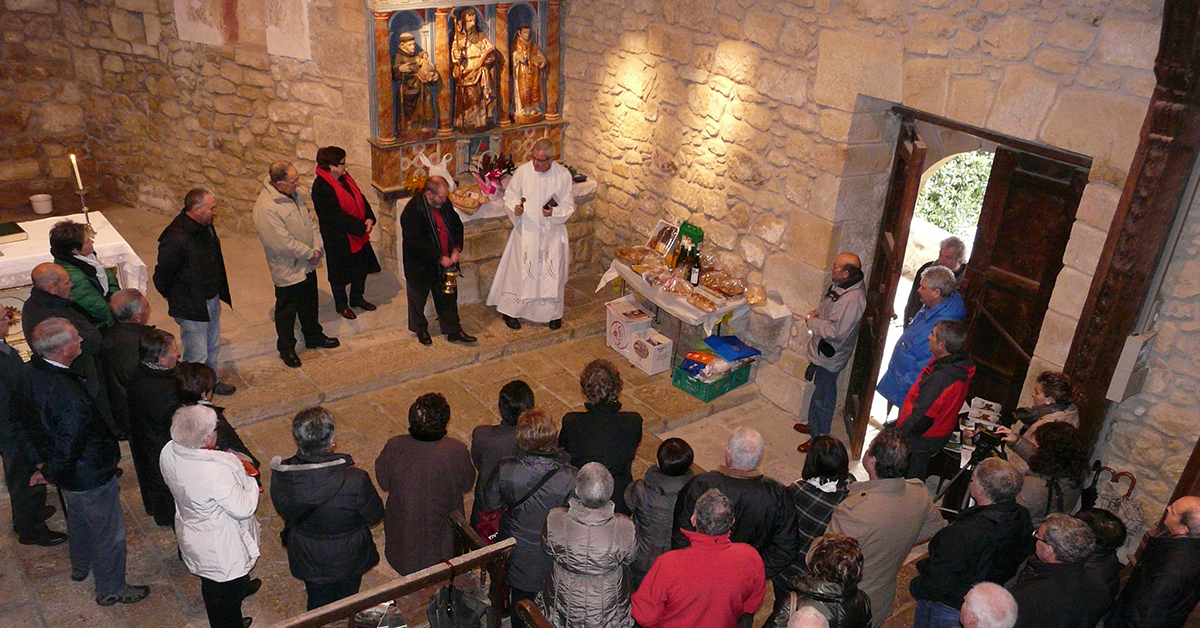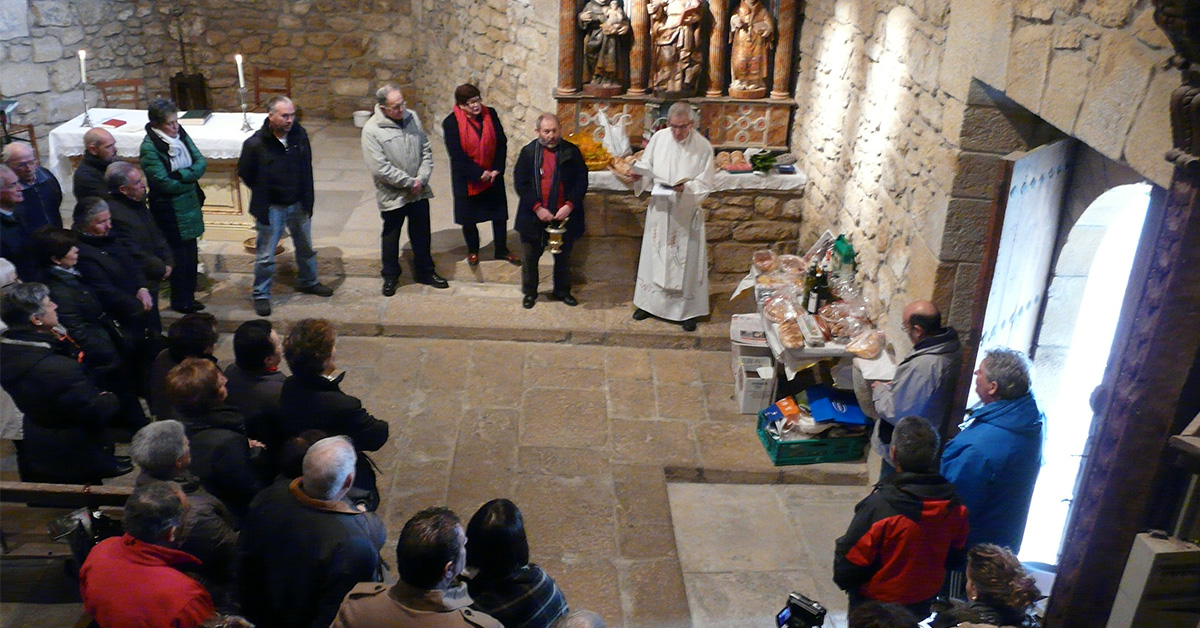Archives
St. Anthony the Abbot or St. Anthony the Great (17 January) is known for living as a hermit, for his strength shown in the face of repeated temptation by the devil, and for protecting the swine with which he is traditionally depicted in the iconography. Cattle and livestock in general were usually given a day of rest on the saint’s feast day. In turn, they were blessed by driving them over the smoking remains of the yule log, passing under a protective charm placed on the lintel of the animal pens and feeding them blessed bread and water. If that were not possible, the animals were driven around a chapel or church dedicated to their patron saint.
(more…)

Blessing of products for auction. Garai (Bizkaia), 2013. Igone Etxebarria. Labayru Fundazioa Photographic Archive.
The feast day of St. Anthony Abbot is in the dead of winter on 17 January (the 13 June is the feast day of St. Anthony of Padua). Once Christmas is over and in the run-up to Carnival, there is a series of festivities that are deeply rooted in the life of our baserritarras (people living on the farmsteads): along with St. Anthony, Candlemas is on 2 February, St. Blaise on the 3rd and St. Agatha of Sicily on the 5th of the same month. French toast is usually eaten on all of them and, to a certain degree, they are all part of the Carnival season that is just around the corner.
In the case of St. Anthony, he is very beloved as he protects animals. He has been a renowned saint and his feast day is particularly important in those places where livestock has been a mainstay of the local economy.




